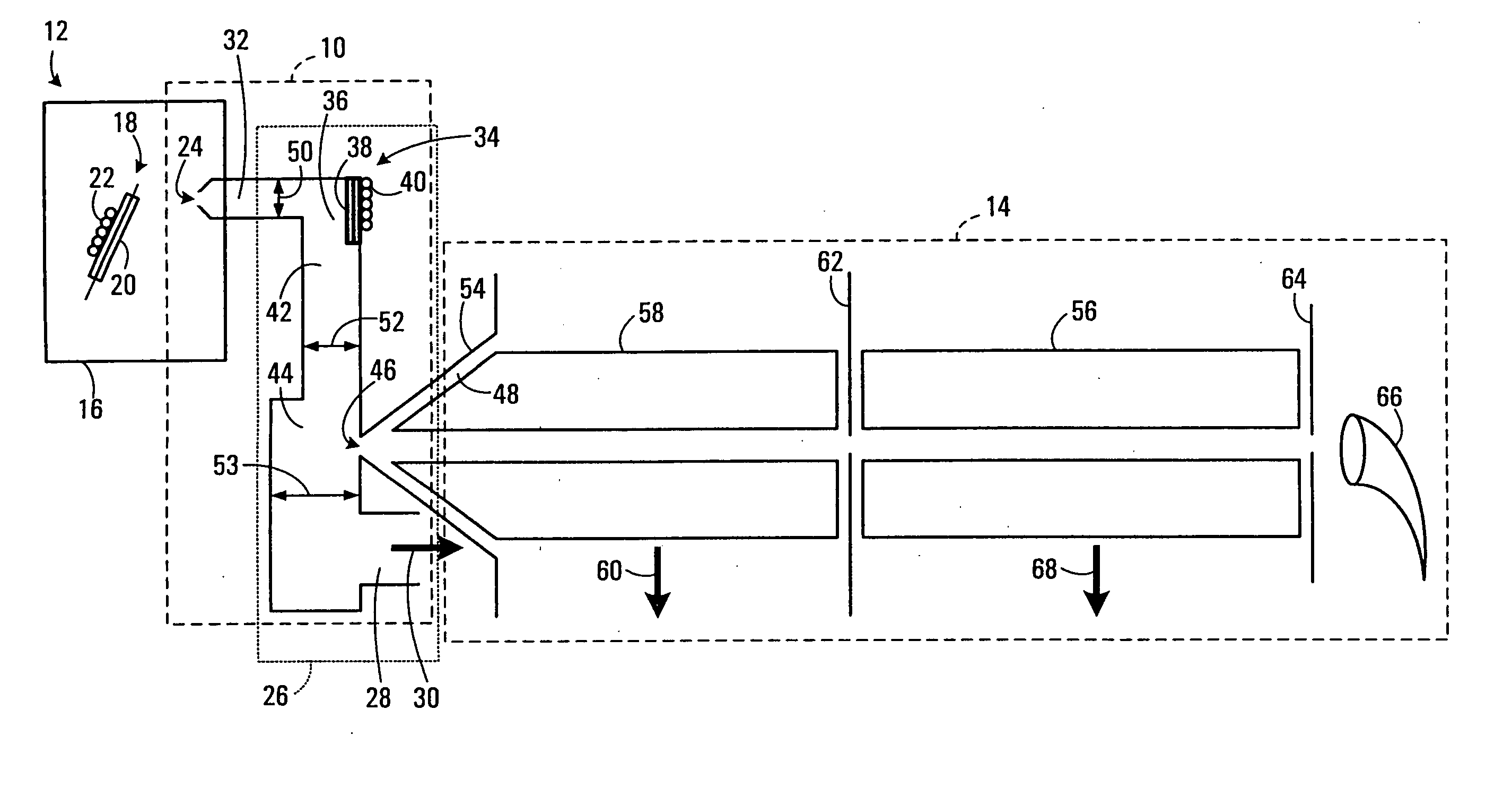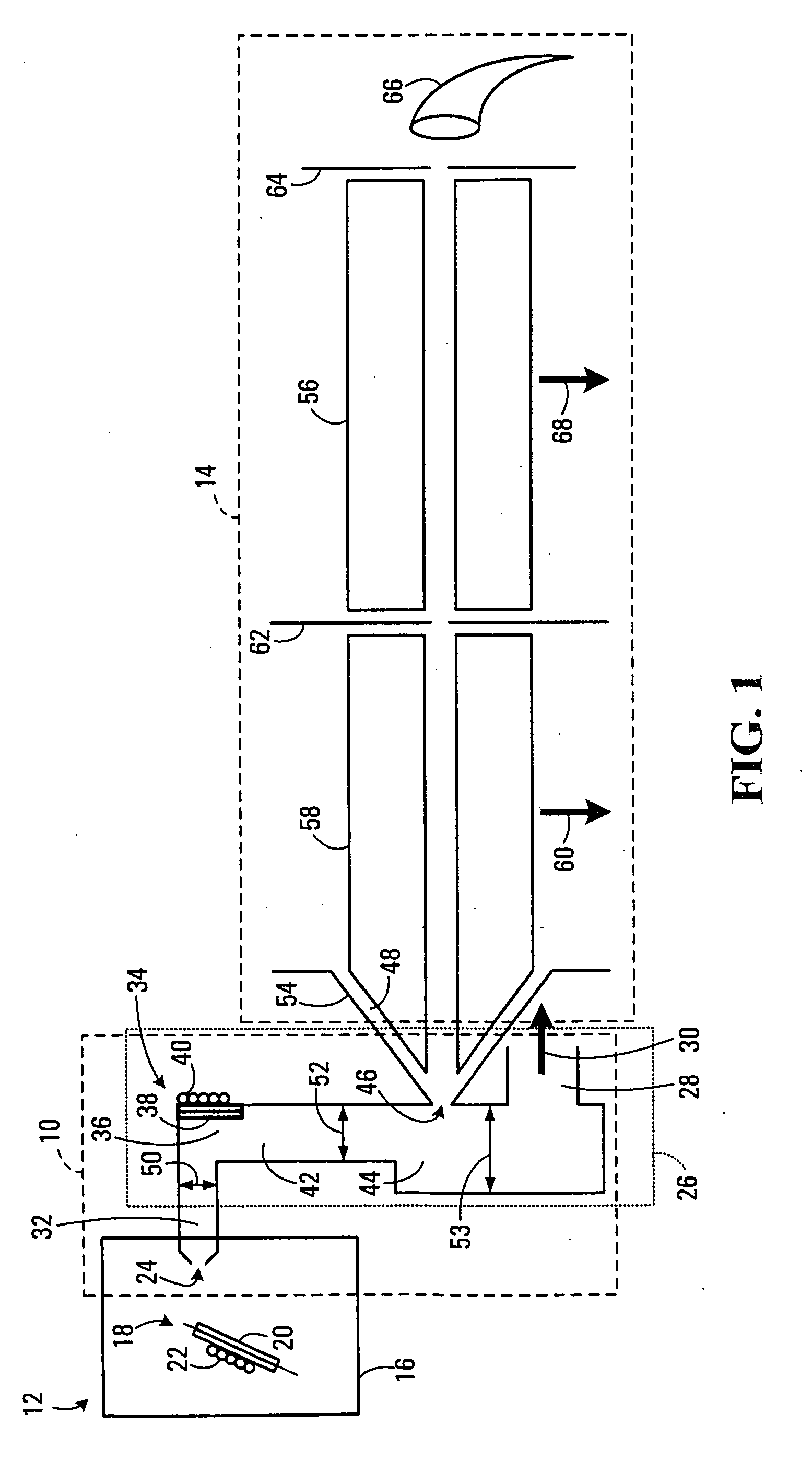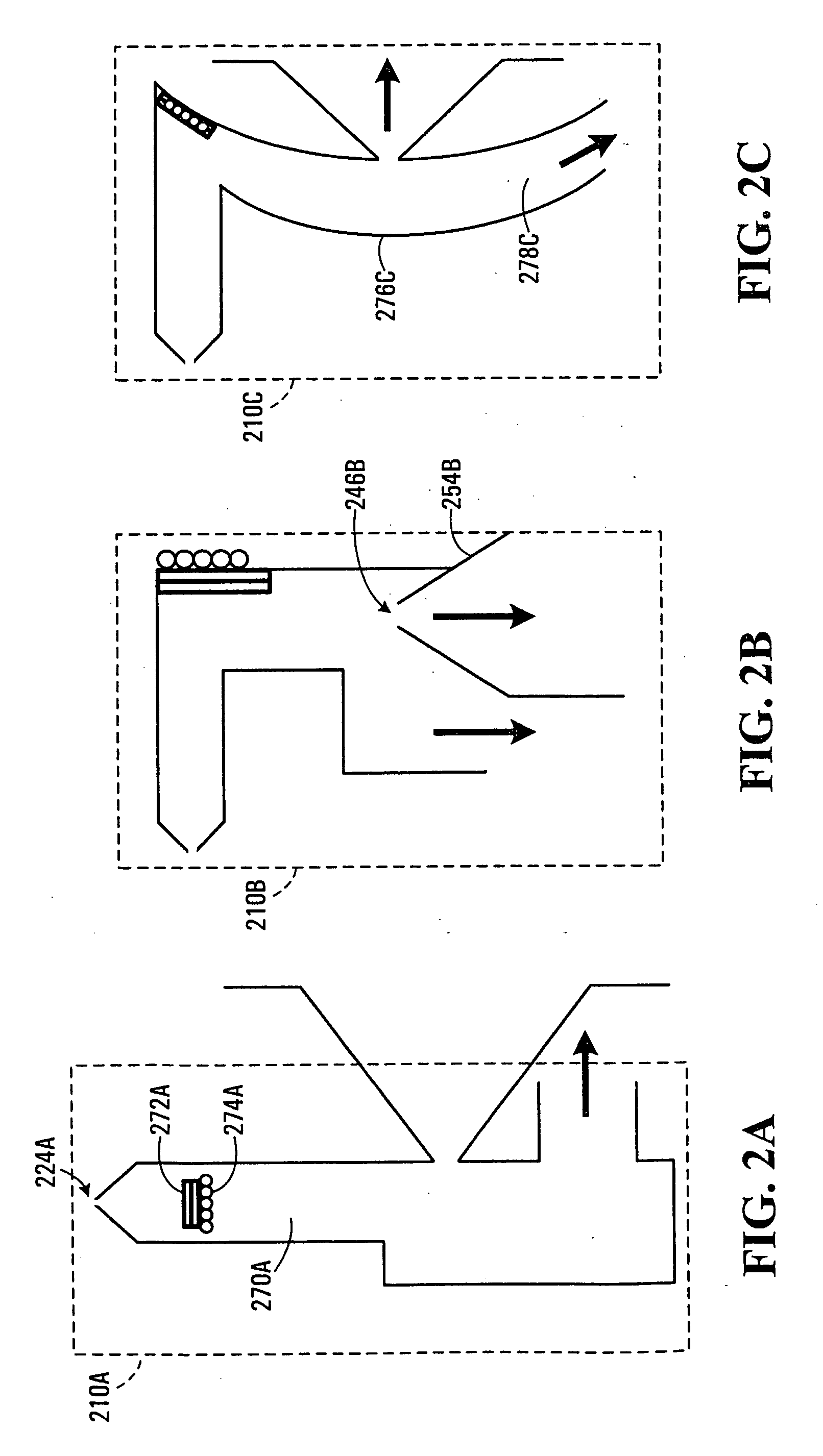Mass spectrometer interface
a mass spectrometer and interface technology, applied in the field of mass spectrometry, can solve the problems of poor signal-to-noise ratio, high chemical background and relatively low sensitivity of api sources, and achieve the effects of reducing chemical background, high signal-to-noise ratio, and increasing sensitivity
- Summary
- Abstract
- Description
- Claims
- Application Information
AI Technical Summary
Benefits of technology
Problems solved by technology
Method used
Image
Examples
Embodiment Construction
[0034] An exemplary embodiment of a mass spectrometer interface 10 is illustrated in FIG. 1. As illustrated, mass spectrometer interface 10 couples an atmospheric pressure ion source 12 and a mass spectrometer 14 in such a way as to enhance concentration, or sensitivity, of ions of characteristic m / z and reduce chemical background while providing the appropriate gas flow to a mass spectrometer system.
[0035] Atmospheric pressure ion source 12 is enclosed in a chamber 16 that is maintained at approximately atmospheric pressure. In the exemplary embodiment, ion source 12 is shown as electrospray, but may be an ion spray, a MALDI, a corona discharge device, an atmospheric pressure chemical ionization device, an atmospheric pressure photo ionization device, or any other known ion source.
[0036] A trace substance to be analyzed is ionized by electrospray ionization using a needle 18 or other ionizing means, in a conventional manner. Samples injected into ion source 12 elute in a flow of ...
PUM
| Property | Measurement | Unit |
|---|---|---|
| pressure | aaaaa | aaaaa |
| diameter | aaaaa | aaaaa |
| average pressure | aaaaa | aaaaa |
Abstract
Description
Claims
Application Information
 Login to View More
Login to View More - R&D
- Intellectual Property
- Life Sciences
- Materials
- Tech Scout
- Unparalleled Data Quality
- Higher Quality Content
- 60% Fewer Hallucinations
Browse by: Latest US Patents, China's latest patents, Technical Efficacy Thesaurus, Application Domain, Technology Topic, Popular Technical Reports.
© 2025 PatSnap. All rights reserved.Legal|Privacy policy|Modern Slavery Act Transparency Statement|Sitemap|About US| Contact US: help@patsnap.com



